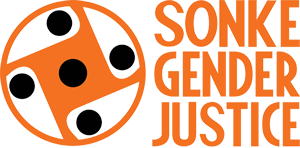Introduction
Technology-facilitated gender-based violence, or TFGBV, is an act of violence perpetrated by one or more individuals that is committed, assisted, aggravated and amplified in part or fully using information and communication technologies or digital media, against a person based on their gender (UNFPA,2023).
TFGBV often takes place in different countries, making traditional legal frameworks and local enforcement efforts difficult. This dilemma poses a significant challenge to potential victims, policymakers, law enforcement agencies, and human rights advocates because some governments and or states do not have international conventions that regulate TFGBV beyond boarders.
Moreover, some members of the judiciary do not have sufficient capacity to adjudicate over TFGBV cases. The greater challenge is that we currently do not have a global judicial body that has powers to adjudicate over TFGBV cases that occurred in different countries or jurisdictions. It is therefore imperative for people to know how TFGBV manifests itself and how Sonke Gender Justice is working to counter this new wave of GBV.
Who is more susceptible to TFGBV?
While TGBV affects both men and women, studies have shown that women are disproportionately affected by TFGBV. According to the Institute of Development Studies, between 16% to 58% of women have experienced technology facilitated gender-based violence while 85%of women have witnessed technologically facilitated gender-based violence against other women.[1] The rapid evolution of technology has given many an impression that TFBV is a new norm.
TFGBV can take many forms, but the most pervasive forms are revenge pornography, digital abuse, doxing and other forms of online violence.
- Online harassment: This includes instances of being repeatedly humiliated, embarrassed by an individual or group of people.
- Cyberstalking: Persistent and unwanted contact from someone. This is usually accompanied by derogatory words an act of libel that can leave someone uncomfortable.
- Non-consensual sharing of intimate images: Posting someone’s intimate images or threatening to share them without their consent. An intimate image would be a video, photo (digital or physical) of someone in a sexual activity, exposing their genital, anal area or breast or nudity.
The role of Sonke Gender Justice in the fight against TFGBV
Sonke Gender Justice together with its allies is at the forefront of the conversation about TFGBV. It helps to identify gaps in legislation, raise public awareness about the issue, address the root cause of TFGBV and provide capacity building to TGBV related stakeholders. Through Transform Digital Spaces Activity, Sonke Gender Justice supports practical approaches to preventing, mitigating and responding to TFGBV. It particularly focuses on addressing violence experienced by women in politics and public life.
Sonke does not tolerate sexual harassment, bullying, abuse or any other forms of harassment or violence. To report an incident of sexual harassment, bullying, abuse or any other form of harassment experienced. CALL the toll-free whistle-blower hotline: 0800 333 059, or SMS: 33490, or email: sonke@whistleblowing.co.za
Impact of TFGBV

Technology-facilitated gender-based violence (TEGBV) inflicts emotional and psychological damage, leading to issues such as anxiety, depression, and fear. Women may encounter safety threats if their abusers utilize technology to monitor their movements or intensify violence. TEGBV also impacts social and economic aspects, as it can damage reputations, result in job loss, and restrict engagement in online environments. Numerous women struggle to attain justice due to inadequate legal protections or available support.
Recommendations for fighting TFGBV.
- Governments should conclude cross boarder conventions or treaties that will ensure compliance beyond boarders.
- Governments should have a responsibility to ensure that internet service providers are held accountable for the harmful content shared on their platforms.
- There should be clear processes for removing abusive content online and supporting survivors.
- Internet service providers should have a responsibility to regulate harmful behaviour on their platforms, for example, enhancing algorithms to identify abusive content, improving user reporting systems, and providing real-time support for victims.
- There should be collaboration between governments and civil societies to create clear, enforceable standards for content moderation that prioritize safety without infringing on users’ rights.
Written by: Advocate Lerato Caroline Khutlang, Sonke Gender Justice GBV Committee Vice Chairperson.
Edited by: Amukelani Chauke








